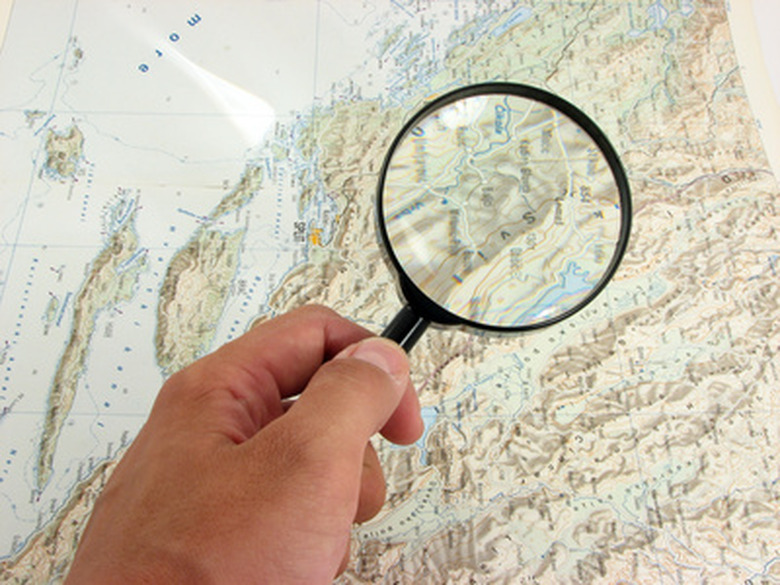How Do I Find UTM Coordinates From A Street Address?
Universal Transverse Mercator (UTM) coordinates are a simple method of describing the location of any spot on the Earth's surface. Their chief advantage over latitude and longitude is that UTM coordinates are measured in meters instead of degrees, so we can use ordinary arithmetic to calculate the distance between two places.
Although it is possible to find the UTM coordinates of a place with a topographic map, ruler and calculator, Internet-based tools have made this task much easier.
Step 1
Open Google Maps and enter an address in the search box. For faster location, include the postal code in the address (for example, 200 East Colfax Ave., Denver, CO 80203). Google Maps will display a local map with a red marker (with an "A") at the specified address.
Step 2
Right-click at the point of the marker and choose "What's Here?" from the pop-up menu. The latitude and longitude of the point appear in the Google Maps search box (for the example, the latitude and longitude are 39.740414, -104.984411). Copy the latitude and longitude to Notepad or write the two numbers on a piece of paper.
Step 3
Visit the Geographic Coordinates to UTM conversion page. Paste or type the longitude (second number) in the top blank, and paste or type the latitude (first number) in the bottom blank. Make certain to include the minus sign(s) if present. Click the double arrow pointing right.
Step 4
Read the UTM coordinates of the point from the two blanks on the right. In this case, X = 501335.7 and Y = 4398946.5 (rounded). The UTM zone is 13 and the hemisphere is North (both zone number and hemisphere must be included when stating UTM coordinates).
Cite This Article
MLA
O'Donahue, Kelvin. "How Do I Find UTM Coordinates From A Street Address?" sciencing.com, https://www.sciencing.com/do-utm-coordinates-street-address-6872506/. 24 April 2017.
APA
O'Donahue, Kelvin. (2017, April 24). How Do I Find UTM Coordinates From A Street Address?. sciencing.com. Retrieved from https://www.sciencing.com/do-utm-coordinates-street-address-6872506/
Chicago
O'Donahue, Kelvin. How Do I Find UTM Coordinates From A Street Address? last modified March 24, 2022. https://www.sciencing.com/do-utm-coordinates-street-address-6872506/
